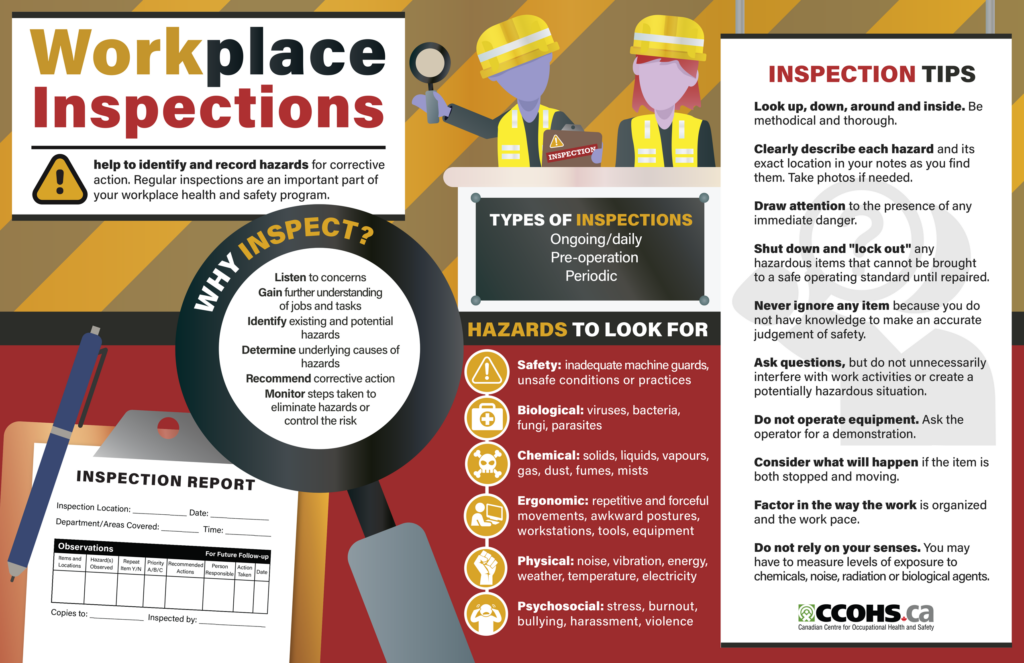
What are work place inspections?
Work place inspections are an essential component of your prevention program. The process involves carefully examining work stations on a regular basis with a view to:
- identifying and recording actual and potential hazards posed by buildings, equipment, the environment, processes and practices
- recording any hazards requiring immediate attention
- determining whether existing hazard controls are adequate and operational
- recommending corrective action where appropriate
A prevention program includes several types of inspection.
- Spot inspections are carried out on occasion in order to meet a range of responsibilities with respect to work place health and safety. They focus on a specific hazard associated with a specific work station or work area for example, noise made by a shredder, operation of a pump, pressure from a boiler or exposure to a solvent.
- Pre-operation inspections of special equipment and processes are often required before starting the inspection itself, such as equipment checks before working under water or entering a closed area.
- Critical parts inspections are regular inspections of the critical parts of a machine, piece of equipment or a system that have a high potential for serious accidents. These inspections are often part of a preventive maintenance program or hazard control program. Checklists can be used for forklifts, tractor semi-trailers and aircraft, for example.
- New equipment inspections involve series of specific tests and checks that are carried out before starting up any new piece of equipment. This means that prior to starting to operate a recently acquired air compressor, the manufacturer or installer checks to ensure that all the parts are in the right place and are working properly.
- Routine inspections are inspections carried out on a regular basis in a given work area. They cover all working conditions, including work hazards, processes and practices.
This pamphlet covers mainly routine, regular and planned inspections. However, the principles that apply in these types of inspections can easily be adapted to other types of inspections.
Legal requirements
Under Part II of the Canada Labour Code, employers have a duty to protect the health and safety of any person in their employ or to whom they provide access to the work places they are responsible for. The Code also enumerates a series of specific obligations that employers must meet. Regular work place inspection and compliance with minimal requirements prescribed in the Canada Occupational Health and Safety Regulations are probably the two best ways of fulfilling those responsibilities.
In fact, employers must ensure that all or part of the work place is inspected every month by the work place committee or the health and safety representative, so that the entire work place is fully inspected in the course of each year.
It is important that relevant sections of the Regulations be consulted prior to and during the inspection. For example, for inspections of machinery and equipment, the standards set out in Part XIII of the Regulations entitled “Tools and Machinery” should be reviewed. Inspection of electrical material is explained in Part VIII, “Electrical Safety”.
Important points to remember
- Routine inspections are a critical component of a good accident prevention, occupational disease and fire prevention program.
- Routine inspections help to ensure that work places are in compliance with the requirements laid out in the Canada Labour Code and the Canada Occupational Health and Safety Regulations.

